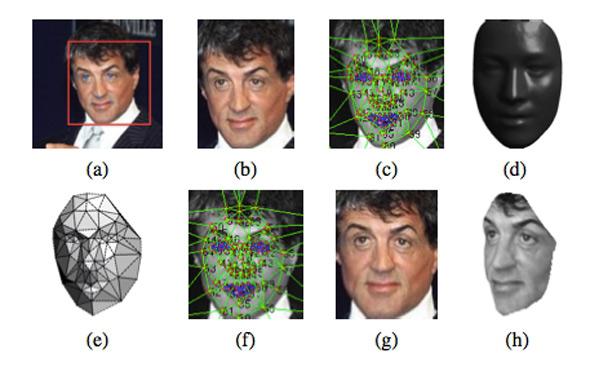Almost two years ago, Facebook bought Face.com, an Israeli startup that specialized in face-recognition software. Given the instant backlash of headlines containing the word “creepy,” it’s no surprise that Facebook has kept pretty quiet about the technology since then.
Last week, though, Facebook quietly published a research paper that shows it has in fact been hard at work developing its face-recognition capabilities. The paper, co-authored by Face.com co-founder Yaniv Taigman, introduces a system called DeepFace that can match two images of the same face with incredible accuracy.
Trained on a data set of some 4 million photos “from a popular social network,” the software uses 3D modeling techniques and artificial neural networks to recognize similarities between two images of the same person—even when the angle, lighting, and facial expressions are different.
Just how good is DeepFace? On one benchmark data set, composed of professional photographs of thousands of different celebrities, it achieved an accuracy rate of 97.25 percent. That’s almost exactly as accurate as your average human.
Taigman and his co-authors—Ming Yang and Marc’Aurelio Ranzato of Facebook’s artificial intelligence team and Lior Wolf of Tel Aviv University—plan to present DeepFace at a computer vision conference in June, reports MIT Technology Review’s Tom Simonite.
But Facebook itself is not crowing about the achievement, probably because it’s wary of another round of “creepy” headlines. (Sorry guys!) The company wants to make it clear that DeepFace is an academic project, not an actual Facebook product.
“This is theoretical research, and we don’t currently use the techniques discussed in the paper on Facebook,” spokeswoman Lydia Chan told me.
The company’s reticence is understandable. Even as people become more comfortable entrusting big tech companies with their photos, files, and personal correspondence, facial recognition technologies remain something of a taboo. Google, for its part, said last year that it won’t add face-recognition features to Google Glass and won’t approve third-party apps that do.
Yet Google, too, has had its best AI minds hard at work training computers to recognize images. And no wonder: As creepy as face-recognition might be, it also holds enormous potential utility for applications ranging from advertising to law enforcement to Internet search.
Neither Facebook nor Google is eager to be the company to foist face-recognition software on an unwilling and outraged public. But if and when it becomes clear that people are as blasé about computers recognizing their face as they are today about computers reading their emails, neither company will want to be left behind. In fact, they’ll already be at the forefront.
Previously in Slate:
